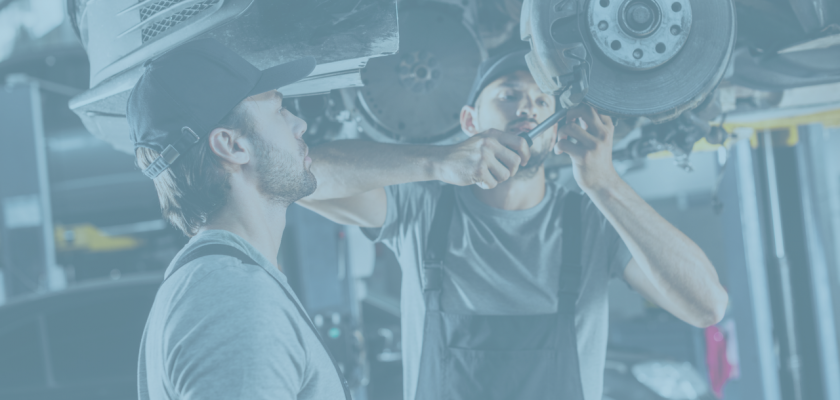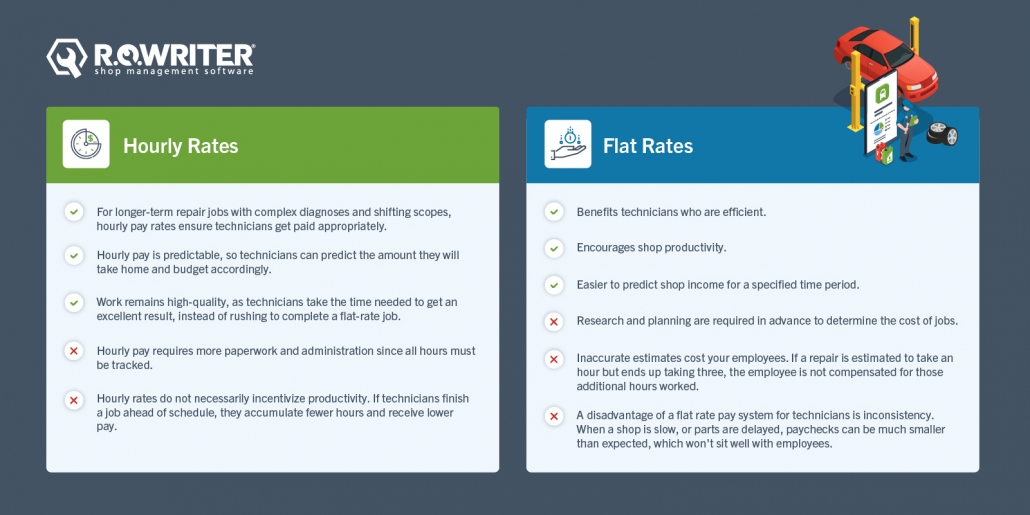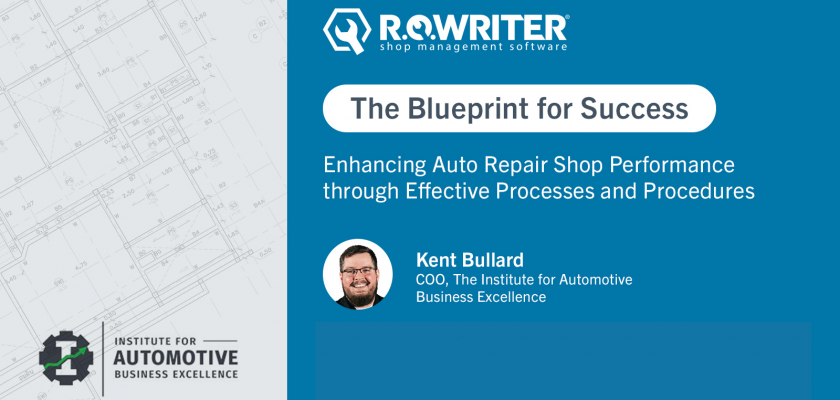Managing Your Auto Repair Shop Labor Rates

Labor costs are often the most significant expense related to operating an auto repair business. However, labor can also generate the most profit if it is priced correctly.
To succeed as a shop owner, you must find a competitive wage and payment method that your technicians like, and which is cost-effective for your shop and appealing to your customers.
Continue reading to discover key factors that influence employee pay, uncover helpful tips for selecting the appropriate labor rate, and learn how to manage labor costs by utilizing a matrix.
The Importance of Providing Competitive Wages
Employee wages form the base of your labor pricing, as these labor costs need to be thoughtfully passed on to your customers.
A fair wage for your technicians is dependent on the market value of labor in your area, as well as a few other factors, including what other benefits you offer your team members, and their level of experience and certification.
Attracting and retaining top-tier technicians is the key to a thriving auto shop. Download this checklist to help you design a competitive and enticing benefit package that goes beyond the ordinary.
Flat Versus Hourly Rates – Choosing an Approach to Payment
In general, auto technicians are paid either by the hour, or through a flat rate per job completed.
Hourly rate pay is, as the name suggests, a salary paid for the number of hours worked. A flat rate system is where you charge a set price for the full project, and the technician receives a portion of that price.
The flat rate covers the cost of labor, materials, and any overhead costs. This is sometimes referred to as the “loaded technician cost”
The two payment structures offer various pros and cons for owners to consider when deciding which pay structure to implement:

Reducing Labor Costs
With both the hourly rate and flat fee approach, there are strategies owners can use to reduce labor costs and ensure they are billing appropriately for labor. Here are three strategies that can really work to bring your costs down:
1] Incentivizing Technicians
If you like all the benefits that an hourly pay structure has to offer but are concerned it will affect the level of productivity at your shop, you can think about offering incentives.
For example, for every job that is completed per month, the technician can earn a bonus.
A good labor auto repair guide can be essential to set your labor rates and labor times. A guide allows you to be more efficient in tackling new jobs and confident in knowing you have set a fair rate for customers. Instead of having to individually look up labor guides, shop management systems, like R.O. Writer, integrate with repair guides allowing your shop to create quick and accurate estimates.
2] Setting Up a Labor Matrix
Adjusting your labor rates for each repair order manually can be a hassle, especially when you have a large order size. This is where a labor matrix can help.
Using a labor matrix will allow you to add a multiplier to either your labor hours or your labor rate, resulting in an increased quantity for either metric. This ensures you are staying profitable on all jobs.
For example, a tie rod end may book at 0.7 hours on a 1999 Buick. However, on older vehicles, the bolts will be rusty and hard to remove, requiring additional time. A multiplier on labor time could add 0.2 hrs. to account for the extra time required.
A multiplier ensures you are charging the correct amount and booking the correct amount of time that is required in either a flat rate approach or an hourly rate system. Many shops account for the multiplier in the quote, so the customer is unaware they are paying higher than the stated labor rate for the job.
Shop management software, like R.O. Writer, can allow you to set up a custom matrix system that your service writers can easily use to build out jobs. Using a software package to create automatic labor pricing saves your shop time, ensures accuracy, and boosts productivity.
3] Hiring More Experienced Technicians
While more experienced technicians may command a higher salary, they can make up for that cost with their wealth of experience. Experienced hires should understand how to deliver fast, exceptional service.
Running diagnostics for vehicles, solving problems, and ensuring vehicles run without any further issues are all solutions that skilled auto mechanics will provide for your customers.
Ideally, your shop should have a mix of more experienced and less experienced technicians, so you can assign harder jobs to more expensive resources and easier jobs to less expensive ones. Additionally, the less costly staff offset the comparatively high cost of the more experienced staff and allow shops to maintain strong profit margins.
To Increase Profitability, Make Sure You Have a Handle on Labor Costs
Finding the right cost for labor at your shop means balancing a number of priorities. On the one hand, you have customers who are watching their pennies right now and expect your rates to be competitive and your quotes to be accurate. On the other hand, you have to keep your technicians happy and loyal, and your shop profitable and financially sound.
To strike this balance, lean on the capabilities of your auto repair shop software, like labor guide integrations, pricing matrices, and reporting around technician reporting and efficiency. Taking a data-driven approach to labor pricing, and reviewing your rates on a regular basis, will help your shop stay competitive and positioned for long-term success.



